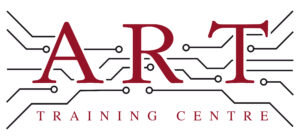Definition
Pad Stack is a term used in electronics manufacturing to describe the arrangement of pads on a printed circuit board (PCB) where components are soldered. It consists of various layers, including the pad itself, the dielectric material, and the copper traces. The pad stack is crucial for ensuring proper electrical connections and mechanical stability of the components on the PCB.
How It’s Used in the Industry
In electronics assembly, the Pad Stack is applied during the design phase of PCBs, where engineers define the size and shape of the pads for each component. This ensures compatibility with various soldering methods, such as surface mount or through-hole soldering. During assembly, technicians place components onto the pads and apply solder to create electrical connections. For rework, understanding the Pad Stack is essential for replacing or repairing components without damaging the board. Its significance lies in enhancing the reliability and performance of electronic devices, making it vital knowledge for both trainees and seasoned professionals.
History & Origins
The concept of the Pad Stack became common in the 1980s with the rise of printed circuit board technology. Early adoption was driven by the need for reliable connections in electronic devices. As standards developed, particularly through organisations like IPC, guidelines for Pad Stack dimensions and designs emerged, promoting consistency and quality in manufacturing. Advances in PCB fabrication technologies further solidified the importance of Pad Stacks, as they enabled more complex designs and higher-density assemblies.
Variations
Variations of the Pad Stack can include different pad shapes, sizes, and configurations, depending on the component type and PCB design requirements. For instance, round pads are typically used for through-hole components, while rectangular pads are common in surface mount technology. These variations are essential for optimising soldering processes and ensuring reliable connections. Understanding these differences helps technicians choose the right Pad Stack for specific applications, enhancing the overall performance of the electronic assembly.
Modern Applications
Today, the Pad Stack is integral to electronics production, especially in the context of surface mount and through-hole assembly. Its design directly affects the quality and reliability of solder joints, making it a critical factor in compliance with IPC standards. Modern PCB designs often utilise advanced materials and techniques, such as multilayer boards, where Pad Stacks must be carefully engineered to accommodate complex circuitry while maintaining performance. This relevance underscores the importance of Pad Stacks in both manufacturing and professional training.
Practical Tips & Training
When working with Pad Stacks, it is essential to understand the specifications and tolerances for each component. Use precise tools for inspection, such as magnifying glasses or microscopes, to check pad integrity and solder quality. Safety precautions, including proper handling of solder and tools, should always be followed. Structured training and certification in electronics are crucial for mastering Pad Stack applications, ensuring technicians are well-equipped to maintain high standards in PCB assembly and repair.


